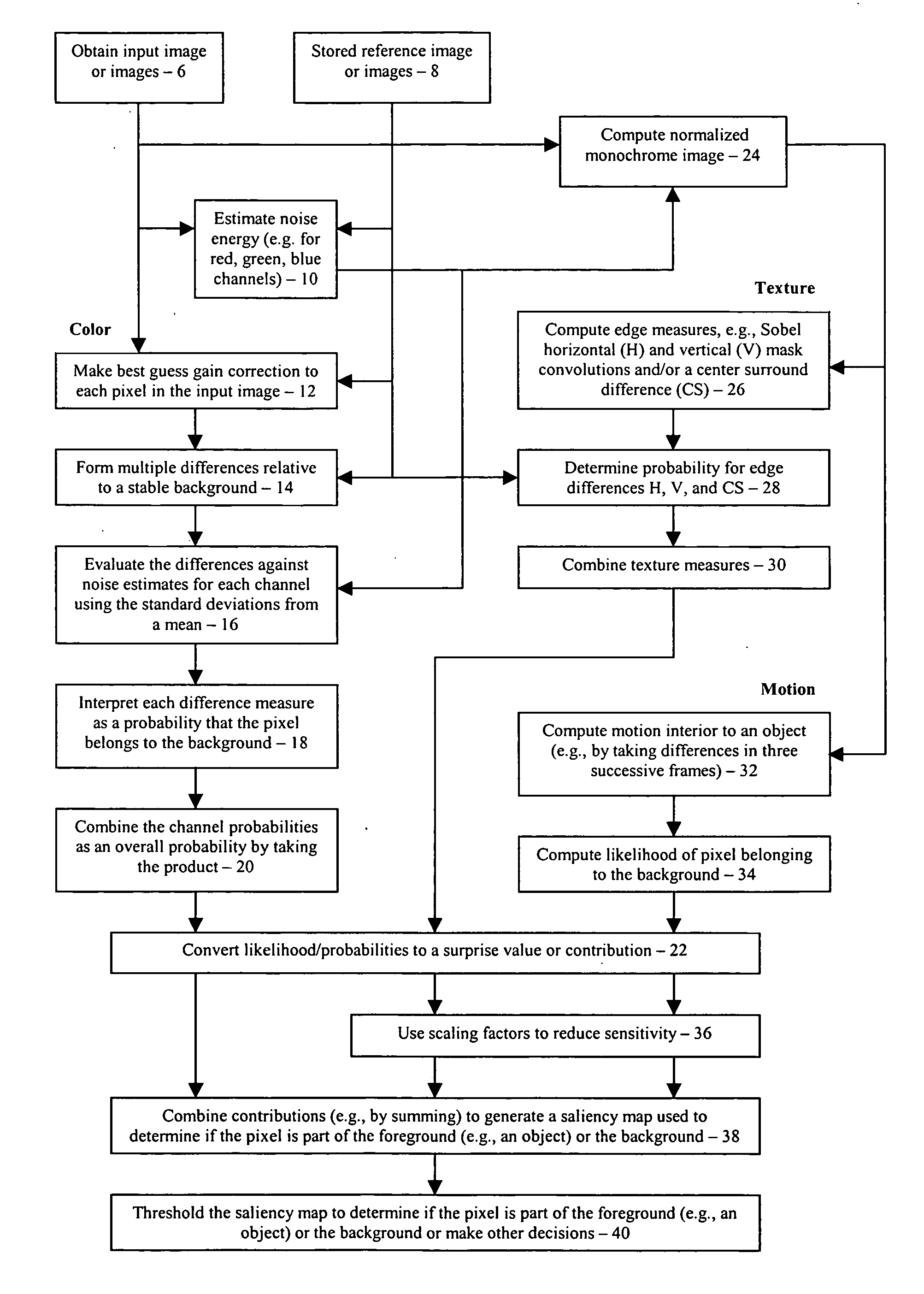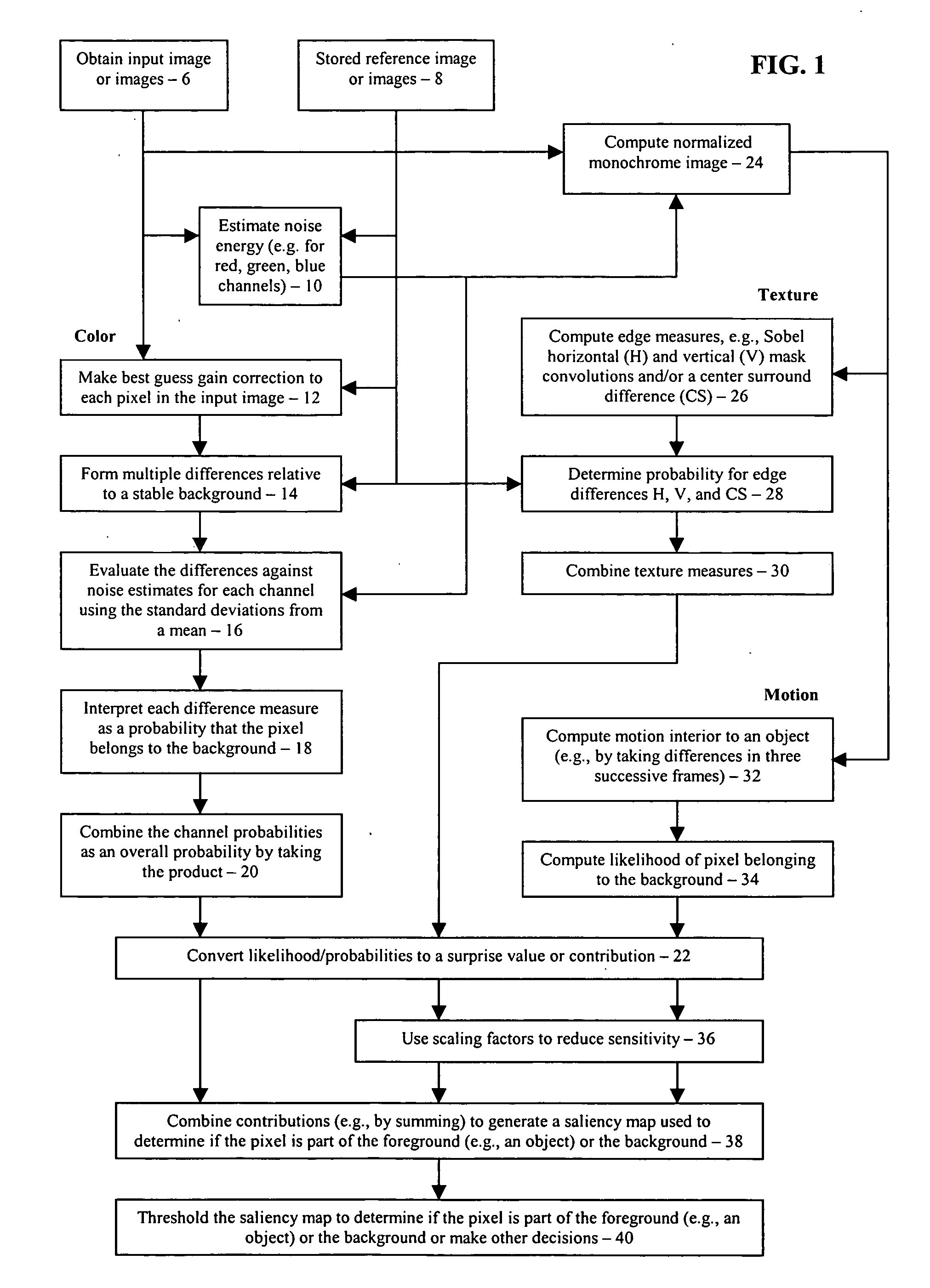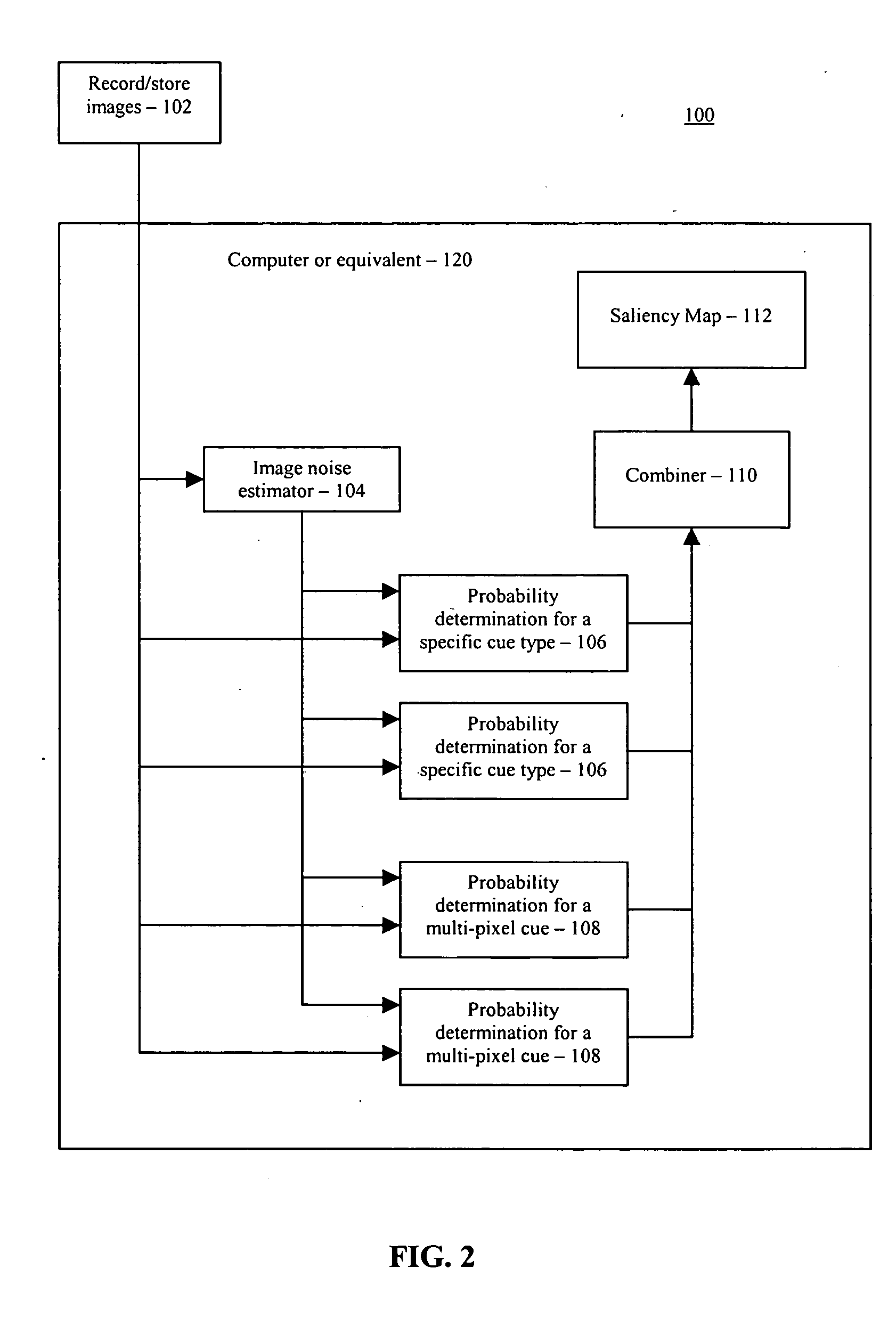Combining multiple cues in a visual object detection system
- Summary
- Abstract
- Description
- Claims
- Application Information
AI Technical Summary
Problems solved by technology
Method used
Image
Examples
Embodiment Construction
[0014] Illustrative embodiments described herein statistically combine information from multiple sources (cues), e.g., differences, edges, and optionally motion, into a saliency map and then threshold this combined evidence to yield foreground / background pixel decisions. For example, differences may include changes in color, texture, edge energy or outlines, movement, etc. between frames. Because the system and methods may directly employ edge information, a change of texture contributes to a detection. Moreover, the computation and decision criterion are simple (addition and thresholding, respectively).
[0015] In a system using both texture differences computed over multi-pixel neighborhoods and more traditional single-pixel differences, a sound statistical basis may be found for combining the two types of differences. A suitable weighting can be achieved by measuring then propagating an estimate of pixel channel noise through the relevant cue detection computations to arrive at a ...
PUM
 Login to View More
Login to View More Abstract
Description
Claims
Application Information
 Login to View More
Login to View More - R&D
- Intellectual Property
- Life Sciences
- Materials
- Tech Scout
- Unparalleled Data Quality
- Higher Quality Content
- 60% Fewer Hallucinations
Browse by: Latest US Patents, China's latest patents, Technical Efficacy Thesaurus, Application Domain, Technology Topic, Popular Technical Reports.
© 2025 PatSnap. All rights reserved.Legal|Privacy policy|Modern Slavery Act Transparency Statement|Sitemap|About US| Contact US: help@patsnap.com



